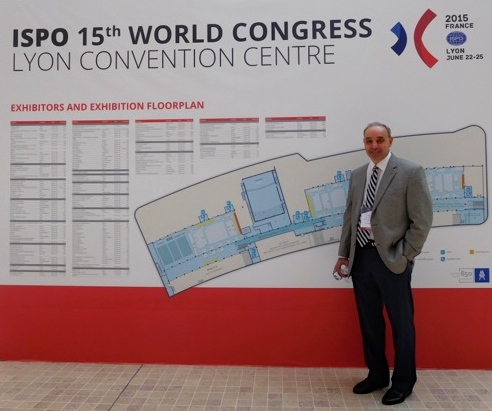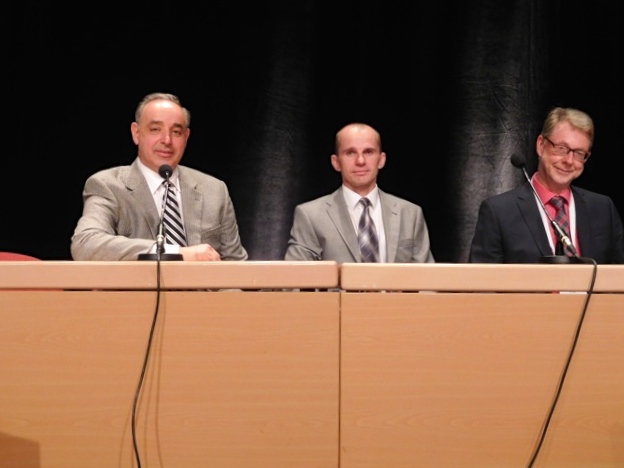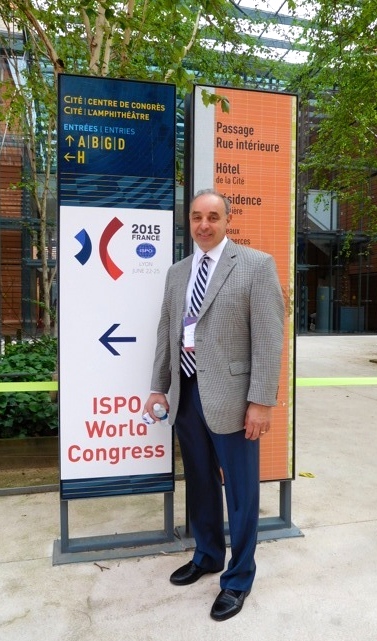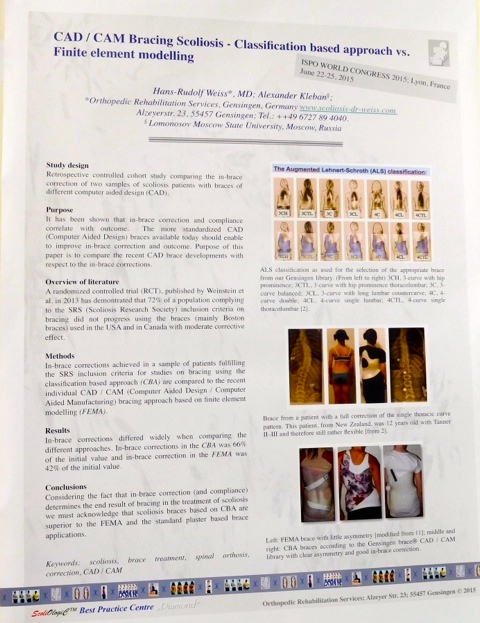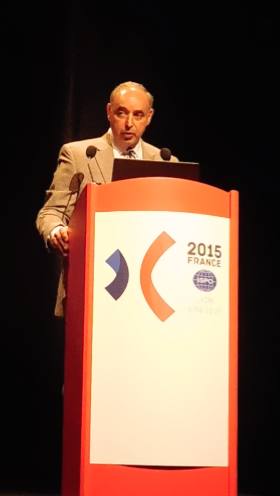 This post comes from France. We are concluding our stay at the ISPO 2015 (International Society of Prosthetics and Orthotics) Annual Congress. Marc and I had the pleasure of visiting Lyon this week with Dr. Weiss and Maksym Borysov, PT, CPO of Ukraine. The three were invited to conduct an instructional course on the conservative management of scoliosis according to The Schroth Best Practice Program® and the Gensingen Brace® by Dr. Weiss (GBW).
This post comes from France. We are concluding our stay at the ISPO 2015 (International Society of Prosthetics and Orthotics) Annual Congress. Marc and I had the pleasure of visiting Lyon this week with Dr. Weiss and Maksym Borysov, PT, CPO of Ukraine. The three were invited to conduct an instructional course on the conservative management of scoliosis according to The Schroth Best Practice Program® and the Gensingen Brace® by Dr. Weiss (GBW).
It’s been an action packed few days. The exhibition hall is filled with exhibitors related to all things bracing and prosthetics. We were able to make connections with a couple of vendors to help improve our patients brace wearing experience and saw a demo on one particularly interesting new product for posture. We also enjoyed meeting ‘Danny’ from Optec, near Atlanta, Georgia, who is confident they can provide, or create, a part to enable us to eventually provide Dr. Weiss’s Kyphologic Brace in the U.S. for patients with hyperkyphosis.
Adjacent to the exhibition halls, hundreds of posters are on display. They represent the recent work of many of the conference attendees from all over the world, including one by Dr. Weiss on CAD/CAM bracing. Very few, however, were on scoliosis. Most were on prosthetics and the innovations and prosthetic products were extraordinary.
As far as new scoliosis bracing innovations, one company from France appeared to present what looked like a high tech looking rigid brace which from appearances is somewhat similar to the Gensingen Brace® but with much more vertical material. However, Dr. Weiss quickly pointed out a few differences he considers to be flaws. There was also a soft bracing bodysuit system out of the UK on display. Anyone who reads our blog knows we are not advocates of soft bracing. However, we had a pleasant conversation with one of their company representatives to learn more. While the concept might seems okay as of yet there are not any evidence-based studies for idiopathic scoliosis for this bodysuit. Developers continue to promote soft bracing systems based on ‘quality of life’ for wearers but when results are what is important then it is fair to say soft bracing is still unproven.
Aside from our group’s presentation, Dr. Weiss has two others and there were two other general presentations on bracing scoliosis by practitioners from Hong Kong (and Alberta, Canada) and another featured rigid bracing from France and Italy. We attended both sessions and discussed our impressions. On Wednesday, Dr. Jean Dubousset delivered a keynote address on the development and significance of EOS x-ray for reduced radiation exposure, his thoughts on the importance of the rotational plane and discussion of balance vs. alignment. It was also good to hear him state that earlier treatment is better, an opinion not always shared by the surgeons of the United States.
While this isn’t news, it bears repeating that the consensus in bracing is the more the patient wears the brace the better the result. This has been proven several times over. Europeans still seem to be the ones who continue to work to innovate and strive to focus on the importance of in-brace corrections. While there are still dramatic differences among scoliosis braces, it was interesting to hear the stories and learn about the construction (different materials, varying weights) of other braces, in detail.
We always enjoy attending conferences with Dr. Weiss. He never fails to challenge others on their work and raise the issue about the benefits of asymmetric vs symmetric bracing. One response to his challenge on that topic by another physician seemed to shift the onus to the patient side implying that parents and kids are so focused on appearance that symmetric braces are preferred for that reason, because they won’t wear them otherwise. It is my thought that raising the bar for the final outcomes–consistently, is what is most important in terms of in-brace correction followed by lasting results (which are unknown for most rigid braces), and of course, user-experience. I found the symmetric response interesting since it is in contrast to what parents tell us they want: to hopefully attain some improvement of Cobb angle and postural improvement–both of which are goals of the Gensingen Brace® which are being attained.
All in all, being involved with this conference was a fantastic experience. One of my takeaways is that when it comes to scoliosis bracing, people’s philosophies are shaped by their background and experiences which can sometimes include a preconceived belief systems within a given framework. Many were interested in the Schroth Best Practice® program approach and Dr. Weiss’s bracing system and hopefully understood that the two can work hand in hand, synergistically. The response to the presentations was encouraging.
As always, Dr. Weiss still enjoys pushing the envelope and that can only be a good thing for the patient.
